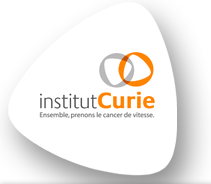Lactose permease lipid selectivity using Förster resonance energy transfer
Résumé
The phospholipid composition that surrounds a membrane protein is critical to maintain its structural integrity and, consequently, its functional properties. To understand better this in the present work we have performed FRET measurements between the single tryptophan residue of a lactose permease Escherichia coli mutant (single-W151/C154G LacY) and pyrene-labeled phospholipids (Pyr-PE and Pyr-PG) at 37 degrees C. We have reconstituted this LacY mutant in proteoliposomes formed with heteroacid phospholipids, POPE and POPG, and homoacid phospholipids DOPE and DPPE, resembling the same PE/PG proportion found in the E. coli inner membrane (3:1, mol/mol). A theoretical model has been fitted to the experimental data. In the POPE/POPG system, quantitative model calculations show accordance with the experimental values that requires an annular region composed of approximately approximately 90 mol% PE. The experimental FRET efficiencies for the gel/fluid phase-separated DOPE/POPG system indicate a higher presence of PG in the annular region, from which it can be concluded that LacY shows clear preference for the fluid phase. Similar conclusions are obtained from analysis of excimer-to-monomer (E/M) pyrene ratios. To test the effects of this on cardiolipin (CL) on the annular region, myristoyl-CL and oleoyl-CL were incorporated in the biomimetic POPE/POPG matrix. The experimental FRET efficiency values, slightly larger for Pyr-PE than for Pyr-PG, suggest that CL displaces POPE and, more extensively, POPG from the annular region of LacY. Model fitting indicates that CL enrichment in the annular layer is, in fact, solely produced by replacing PG and that myristoyl-CL is not able to displace PE in the same way that oleoyl-CL does. One of the conclusions of this work is the fact that LacY inserts preferentially in fluid phases of membranes.
